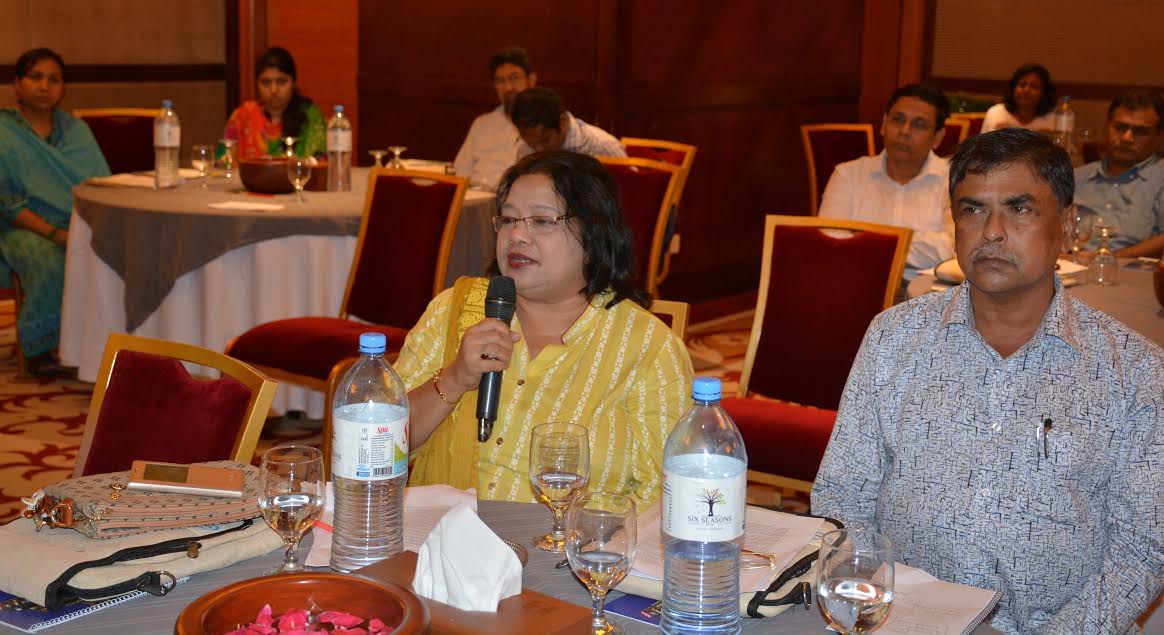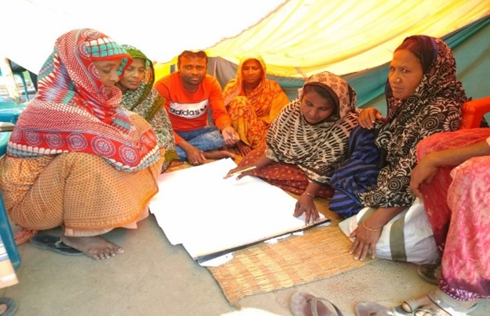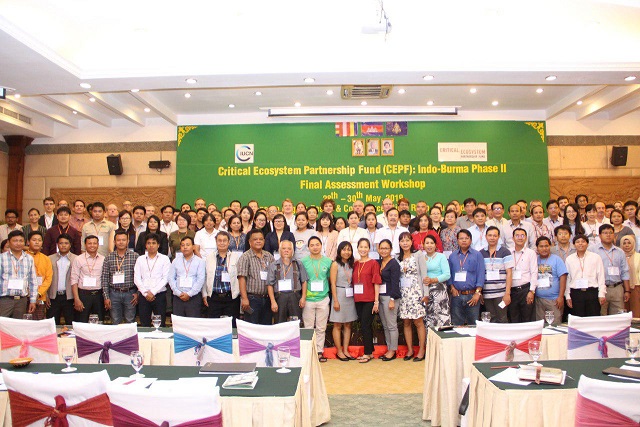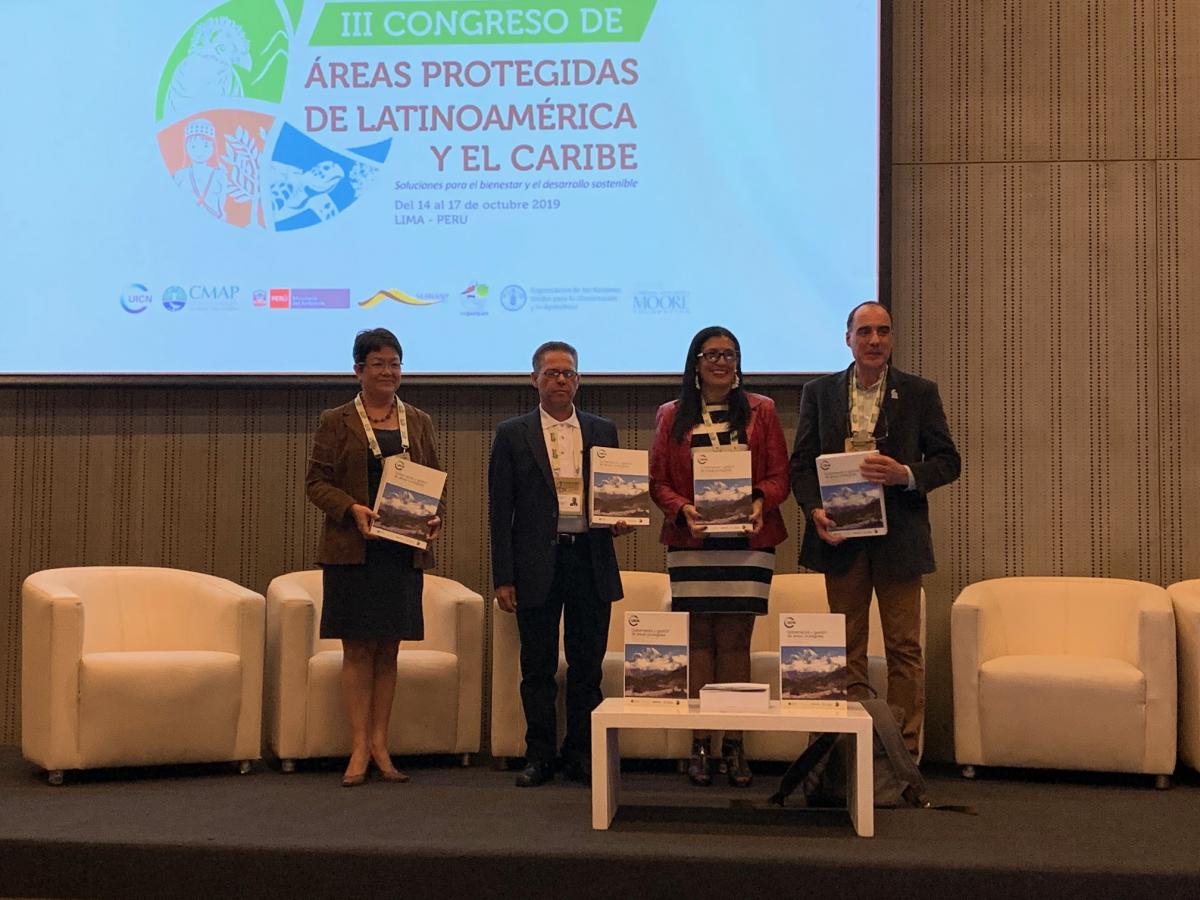International Day for Biodiversity: Nature-based tourism integrated plan needed for Bangladesh
A well-managed ecosystem provides an important foundation for many aspects of tourism. Tourism revenue, in turn, can contribute to the maintenance, protection and conservation of key wildlife populations – which is why the theme of this year’s International Day of Biodiversity (IDB), announced by the Convention on Biological Diversity (CBD), is ‘Biodiversity and Sustainable Tourism.’
On 21 May, Mangroves for the Future (MFF) and IUCN Bangladesh organised a thematic consultation at the Six Seasons Hotel in Dhaka to celebrate IDB 2017. The aim of the event was to highlight the importance of biodiversity conservation in both sustainable tourism and economic growth. The event was attended by senior officials from the Bangladesh Ministry of Environment and Forests (MoEF), Forest Department and Tourism Board; members of IUCN; the National Coordinator for MFF; donor agencies GIZ and USAID; academia; NGOs; the private sector; tour operators; the media; and other marine ecosystem, biodiversity conservation and tourism sector stakeholders.
The subject of sustainable tourism is closely related to the evolving concept of the ‘blue economy’ – economic services and resources provided by marine ecologies. Sustainable Development Goal (SDG) 14: Life Below Water provides the directive to conserve these resources and use them to develop sustainably. Coastal and marine destinations are rich with tourism potential, making tourism a key element of the blue economy – a principle expressed by several of the event’s presenters.
Professor Niaz Ahmed Khan, of the University of Dhaka Department of Development Studies, referred in his presentation to blue economy as a “sustainable ocean-based economic model.” This concept could play an important role in economically uplifting the country – alleviating poverty, ensuring food security and combating climate change impacts. It would also open up many opportunities for tourism through a sustainable integrated plan. However, he emphasised the need to prepare a marine spatial plan for seabed exploration before undertaking a large-scale intervention in the Bay of Bengal.
 Photo: © IUCN / Mohammed Noman
Photo: © IUCN / Mohammed Noman
In another presentation, Professor S Rashidul Hasan of the University of Dhaka Department of Tourism and Hospitality Management, focused on the tourism aspect of blue economy. He highlighted ecosystems like Cox’s Bazar, the Sundarban mangrove forest, Coral Island (St. Martin’s) and Bangladesh’s hill tracts, but noted that all of these sites are limited in their ability to participate in the tourism industry. He emphasised the need for an integrated plan to explore what he called “blue tourism” in these areas.
Speakers from the Bangladesh government included Istiaque Ahmad, Secretary of the MoEF, who was optimistic that biodiversity conservation and blue economy could ensure sustainable tourism development in Bangladesh. He gave the example of Cox’s Bazar, where unplanned tourism has affected biodiversity. He also shared some of the initiatives that the government of Bangladesh has already undertaken, and emphasised the need for more participation from academia, researchers, scientists and environmentalists in order to achieve SDG 14.
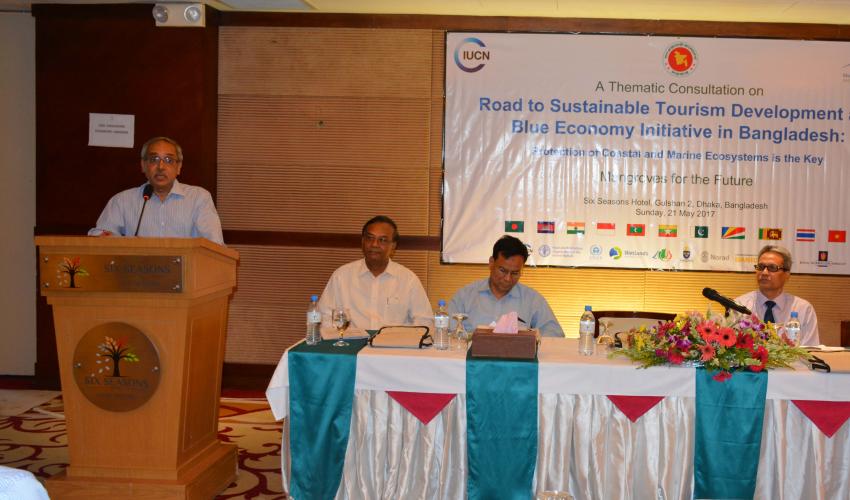 Photo: © IUCN / Mohammed Noman
Photo: © IUCN / Mohammed Noman
Another government representative was Mohammed Shafiul Alam Chowdhury, Chief Conservator of Forests for the Bangladesh Forest Department, who strongly believes that the 2015 Red List of Bangladesh can inform relevant policy to conserve threatened species and their habitats. As the Secretary of the MFF National Coordinating Body, he hoped for a joint initiative with MFF to conserve marine biodiversity through sustainable tourism. Dr Md. Nasir Uddin, Chief Executive Officer for the Bangladesh Tourism Board, shared his experiences with the daily increase of nature-based tourism in Bangladesh. Despite the need for a master plan to ensure that both tourism and biodiversity can flourish, he expressed apprehension with the time such a project will consume.
“The celebration of biodiversity should not be limited to a single day. We are not the only form of life on this planet, and nature ought to be recognized year-round,” said Ishtiaq Uddin Ahmad, Country Representative for IUCN Bangladesh, who moderated the event. “Diversity in species, ecosystems and landscapes attracts tourists and promotes economic growth, and a well-managed tourism sector can, in turn, help reduce threats to key wildlife populations and maintain or even increase biodiversity.”
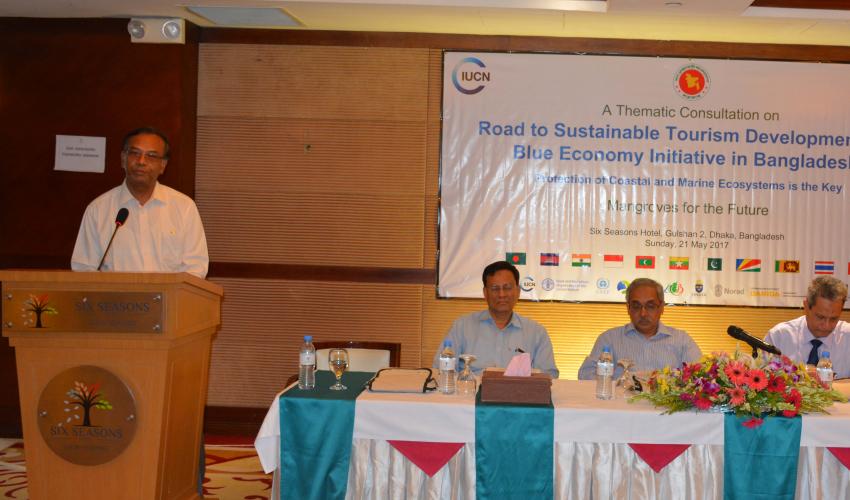 Photo: © IUCN / Mohammed Noman
Photo: © IUCN / Mohammed Noman
MFF has been using ecosystem-based approaches to promote sustainable development and resilience-building in Bangladesh’s coastal and marine areas since 2007 and 2009, when it supported communities affected by Cyclones Sidr and Aila. In October 2011, the NCB for MFF Bangladesh was formed by the MoEF, and Bangladesh became a member country of MFF in 2012. IDB 2017 provided an opportunity for the MoEF and NCB to raise awareness, establish the importance of sustainable tourism and put out a call to action.
Mangroves for the Future (MFF) is a partnership-based regional initiative which promotes investment in coastal ecosystem conservation for sustainable development. MFF focuses on the role that healthy, well-managed coastal ecosystems play in building the resilience of ecosystem-dependent coastal communities in Bangladesh, Cambodia, India, Indonesia, Maldives, Myanmar, Pakistan, Seychelles, Sri Lanka, Thailand and Viet Nam. The initiative uses mangroves as a flagship ecosystem, but MFF is inclusive of all types of coastal ecosystem, such as coral reefs, estuaries, lagoons, sandy beaches, sea grasses and wetlands. MFF is co-chaired by IUCN and UNDP, and is funded by Danida, Norad, and Sida and the Royal Norwegian Embassy in Thailand.

